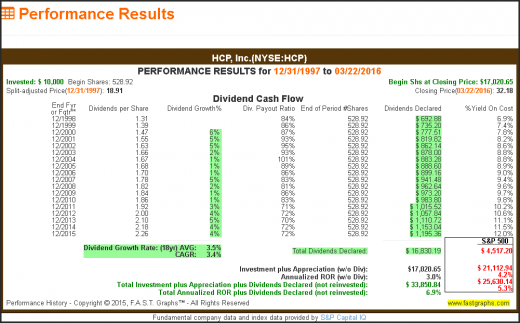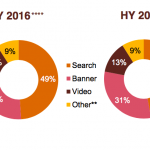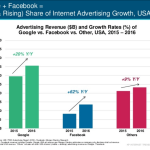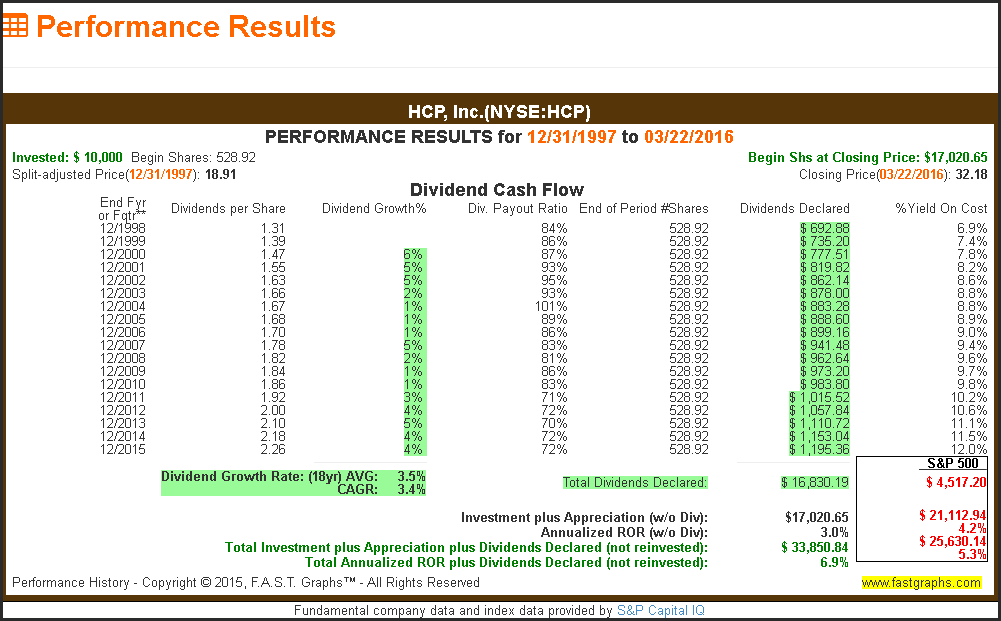Dividends’ real Contribution to complete Return could surprise You
March 24, 2016
Introduction
In recent years, dividends’ contribution to complete return has been some of the closely-studied themes within the investment world. a number of conclusions about the contribution that dividends make to whole return have been claimed. however, these conclusions fluctuate very much. i have seen research claiming that ninety% of returns are attributed to dividends, a number of claiming 50% or more, and others arguing for a 30% contribution. paradoxically, all of them seem to be appropriate depending on the data-units and/or timeframes being measured.
however, i’m on record of no longer being a fan of the standard academic learn about applied to finance. i’ve several issues with conclusions drawn from research, but my major problem is with what I imagine the over-generalized nature of how they are carried out. in consequence, I believe that although their conclusions could also be valid in response to the information as offered, I additionally believe they may be able to be very misleading.
here are but a couple of examples of conclusions that I contend can lie to traders. On December 6, 2010 the heads of Black Rock’s world equity workforce steered that ninety% of US equity returns during the last century had been delivered through dividends and dividend increase. A distinguished cash-management agency mentioned that consistent with usual & terrible’s, the component of complete return as a result of dividends has ranged from a excessive of 53% all over the Forties, to a low of 14% all through the 1990s. same old & poor’s themselves suggest that greater than a third of the long-time period total return of the S&P 500 may also be attributed to dividends. And i’ve learn other research that conclude that dividend paying shares dramatically outperform shares that pay no dividends.
Now remember, the above are only a few samplings. in reality, there are a large number of different studies which have introduced various conclusions about dividends’ contribution to complete returns. because of this, I frequently come across traders quoting conclusions about dividends from research or retaining what I imagine faulty opinions about dividends, dividend paying shares and non-dividend paying shares. subsequently, my purpose with this article is to supply a extra rational examination of the contributions, or their lack thereof, that dividends in reality generate.
My main place is that the contributions that dividends make differ very much from one company to the subsequent. this is aligned with my normal position that it’s a market of stocks and now not a stock market. therefore, relatively than basing decisions on overly-generalized conclusions concerning the merits of dividend paying shares over non-dividend paying stocks, I favor a extra individualized method.
In other words, there are certain shares where dividends subject an ideal deal, and there are particular stocks the place dividends are completely irrelevant. My point being, that trying to affiliate dividends with returns is, for my part and expertise, a fallacious method. as a substitute, I desire analyzing and evaluating the contributions that dividends have made to complete return on a specific case-by using-case basis.
At this level, i want it to be clear that i’m no longer either for or against dividends within the common experience. If profits is your primary funding objective, then clearly dividend paying shares make a substantial amount of feel. furthermore, if very best whole return is your goal, then growth stocks may well be your absolute best choice. however most significantly, I intend to reveal that complete return will not be a perform of whether or not an organization can pay a dividend or now not. there are many elements that pressure whole return, and dividends are handiest one among them.
Debunking the Dividend Paying shares Produces larger total Returns fantasy and Vice-Versa
As I instructed in the introduction, dividends’ contribution to total return has been some of the widely-studied issues in finance. When conducting analysis for this text, I reviewed a few studies on dividends. alternatively, for the needs of this text, i am going to utilize a find out about (white paper) titled Why Dividends subject produced through Dr. Ian Mortimer and Matthew web page, CFA fund co-managers of Guinness Atkinson dollars.
Like most studies and white papers I’ve reviewed, I felt this presentation was very smartly executed and i assumed it made some excellent and important points about investing in dividend stocks. moreover, I consider that their knowledge as introduced was correct, and due to this fact, the conclusions drawn also correct as presented. however, I imagine the consequences, despite the fact that correct, are too basic in nature to enhance absolute conclusions relating to dividend paying shares versus non-dividend paying stocks.
however, for these buyers that want or follow investing in dividend paying stocks, this white paper will beef up their investment philosophy and beliefs. personally, I felt this work covers a few of the essential salient factors assisting investing in dividend paying shares in the general experience. therefore, i might wholeheartedly reinforce much of what’s written on this white paper.
My only downside is with the over-generalized insinuation that dividend paying stocks are superior to non-dividend paying stocks. in actual fact, with sure individual shares that can be actual, however I argue that it can not, and should no longer be thought to be a common theory. the truth is that some dividend paying shares are sophisticated to non-dividend paying shares and some non-dividend paying shares are superior to dividend paying stocks. the only proper conclusion that I consider can also be drawn is that it is determined by the business traits of every particular person firm.
as an example my level, i’ll present excerpts from the above document adopted via examples of some companies via fast Graphs that make stronger and some that refute the conclusions drawn. My first excerpt comprises the introduction to the article, followed with the aid of some normal conclusions and a aiding photo of dividends’ contribution to the S&P 500. it’s this kind of evidence that erroneously leads many investors into believing that dividend paying stocks operate better and account for larger total returns. and albeit, on the surface, the arguments seem compelling.
“Why Dividends subject
Introduction
investors appear to be rediscovering the facility of dividends as crucial component within the pursuit of lengthy-term whole returns. Following the monetary problem of 2008/9 and the consequent fall out, traditional sources of profits reminiscent of executive and corporate bonds and money, misplaced their luster. in this paper we goal to show that, for the long-term investor, the power of dividends from fairness investing has never been diminished and has in fact been slowly and no doubt working away, behind the scenes, adding now not just appreciation within the type of total returns but can mitigate the consequences of each market falls and inflation. profits ARE A matter OF OPINION, DIVIDENDS ARE A matter OF fact Dividends are paid from actual cash and in ‘hard’ bucks – they cannot be manipulated with the aid of ingenious accounting. A greenback paid out to the investor is just that.
“figure three beneath shows how the importance of dividends to complete returns will increase with time horizon. For a regular conserving length of 1 12 months, dividends accounted for 27% of total returns for the S&P500 considering the fact that 1940. If we increase the maintaining length to three years, dividends account for 38%, 5 years it will increase to 42%, over a ten yr duration it rises to forty eight%, and with a 20 yr retaining period dividends account for some 60% of complete returns. it is important to notice, too, that right here we’re just taking a look on the S&P500 as a complete and no longer focusing merely on firms that in fact pay a dividend. If we did, we think these results would seemingly be even more hanging.”

Dividend Aristocrats
This next excerpt argues in favor of companies like these found within the Dividend Aristocrats universe. i am in my view invested in lots of Dividend Aristocrats exactly for the reasons stated below. alternatively, I hardly spend money on Dividend Aristocrats with a purpose to achieve the perfect that you can think of total return. as an alternative, I spend money on Dividend Aristocrats as a result of they most often produce an above-reasonable and persistently-rising earnings stream.
“If an organization has a long history of paying a dividend and is very prone to continue to take action one day, then it is extremely seemingly that administration will commence each and every new yr by first deciding the dividend payout and then thinking about how best to make use of the rest of the free cash flow. This leaves no room for self-importance projects or frivolous uses of shareholders capital. A focused management group that uses the cash available to them efficiently is central to creating a well run – and profitable – company that is ready to grow and thrive one day. constant and continuously growing dividends can provide us a excellent indication that these components are in location.”
The Procter & Gamble firm (PG)
Procter & Gamble is a particularly fine quality company, and because the performance outcomes under illustrate, it has reasonably outperformed the S&P 500 on both a complete cumulative profits and capital appreciation basis for the reason that fiscal yr-end June 1996.

on the other hand, given that fiscal 12 months-finish June 2010, Procter & Gamble has dramatically underperformed the S&P 500 on a capital appreciation basis, however did relatively outperform on a total cumulative dividend profits paid foundation. nevertheless, Procter & Gamble’s whole return was significantly decrease than the whole return of the S&P 500 over this timeframe. simply because an organization will pay a dividend, it does now not robotically follow that it’ll be an outperformer.

Low Yield Above-reasonable increase
not all dividend paying shares are the same. Some have excessive yields and pay out a good portion of salary, whereas others offer decrease yields with lower payout ratios. lower yields and lower payout ratios can continuously be related to quicker-rising companies that require cash to fund their growth. This next excerpt from the paper referred to above addresses these desires or necessities. but most significantly, if you read it closely, it additionally indicates the diversity that exists among dividend payers.
“Dividend payments can act as a useful barometer to establish companies that are disciplined and efficient of their capital allocation and money glide management. There exists an argument, alternatively, that companies who pay a dividend are simply struggling to find new growth alternatives and uses for his or her money.
we think relatively the alternative. within the early ranges of an organization’s existence it’s fairly right that money is used to ascertain the industry. it is ceaselessly proper that the company continues to re-install money into the trade because it moves throughout the early growth section and into the maturity section. as soon as at maturity, however, when competition has entered the market place and the opportunities for such excessive boom have diminished, we think it completely sensible that the corporate takes stock, and in moderation decides to allocate cash to only those projects the place it may reach excessive returns – and offers the rest back to shareholders. Why would we wish administration to plough back all the company’s cash regardless of the returns to be had?”
CR Bard Inc. (CR)
Multinational developer and marketer of scientific applied sciences, CR Bard, can also be a Dividend Aristocrat; on the other hand, it possesses growth and dividend fee characteristics which can be significantly different from what we saw with Procter & Gamble. CR Bard offers buyers a very low yield and a low payout ratio. this is an instance of a company that’s rising at above-average charges and continues to want capital to fund that boom.

Even with its low yield and low dividend payout ratio, fast-rising CR Bard has significantly outperformed the S&P 500 on each capital appreciation and total cumulative dividends paid. however importantly as it relates to the thesis of this article, the majority of whole return has come through capital appreciation. In different phrases, salary boom, no longer dividends are what created one of these high return.

high-Yield moderate increase
To additional illustrate how different quite a lot of dividend paying shares will also be, I supply two extra Dividend Aristocrats providing excessive-yield but average boom. the first is a healthcare REIT and the opposite a utility inventory. both of those dividend paying stocks symbolize examples of investments the place a good portion of whole return comes from dividends. however, with both examples, capital appreciation lagged the S&P 500.
HCP Inc (HCP)


Consolidated Edison Inc (ED)
boom Morphing to Dividend boom
My subsequent two examples symbolize well-known boom stocks that have most effective just lately morphed into dividend paying stocks. when you analyze the past performance of these two examples, there are two interesting issues to note. both of these corporations have outperformed the S&P 500 on a total cumulative dividends paid basis because their 1997 fiscal yr-ends. this is regardless of the fact that they’ve handiest paid dividends in latest years. then again, nearly all of their whole returns were generated via capital appreciation and each have soundly outperformed the S&P 500.
Starbucks enterprise (SBUX)

note: the timeframe for this performance calculation is slightly completely different than my other examples as a result of the company’s September fiscal yr-end. subsequently, the S&P 500 performance calculation can also be calculated over a fairly totally different timeframe.

Amgen Inc (AMGN)


efficiency: S&P 500 Non-dividend Payers
These subsequent excerpts from the paper referred to above claims that dividend paying shares outperform non-payers. The language in the 2nd excerpt is mainly sturdy indicating that dividends have been the principle contributors to complete return in fairness investments. then again, i’ve already offered several examples that show that this conclusion will not be universally legitimate.
“There are always exceptions to any rule, and there’ll at all times be examples of companies which have this sort of distinctive product or service that they can continue to develop for for much longer than the common firm. easy mathematics, on the other hand, dictates that even these corporations cannot grow forever. certainly, if we take a look at the historic evidence for the advantages of firm administration specializing in dividends we are able to see a strong relation between total return performance and the company’s solution to dividend policy.”
“The proof for this may also be seen in determine 1(not shown right here). If we cut up all of the companies within the S&P500 into separate buckets depending on their way to dividends, we can see that dividend payers have outperformed the extensive market, and dividend nonpayers significantly underperformed. historic standpoint Over the long term, dividends had been the principle contributors to total return in fairness investments.”
Monster Beverage organisation (MNST)
on account that December 31, 1997, the non-dividend payer Monster Beverage business enterprise has been the very best performing inventory in the S&P 500. No dividend paying member of the S&P 500 did better. as a result, the vast statement “dividend payers have outperformed the large market, and dividend nonpayers considerably underperformed” is categorically false with this situation. The performance generated by way of Monster Beverage is solely attributed to its extremely excessive revenue increase success.
Tenet Healthcare Corp (THC)
then again, Tenet Healthcare Corp is one of the worst performing stocks of the S&P 500 and can also be a non-dividend payer. the reason this particular S&P 500 constituent underperformed is as a result of its trade underperformed. the lack of paying a dividend used to be in reality no longer a major factor.


abstract and Conclusions
I imagine that investors must have life like understandings and beliefs about their investments. due to this fact, although the notions that dividend paying shares outperform non-dividend paying shares or that almost all of returns come from dividends are broadly studied and promoted, they aren’t genuine in the purest experience. there are various non-dividend paying shares which might be superior performers, and there are a lot of dividend paying shares which can be additionally sophisticated performers. To over-generalize and state that dividend paying stocks outperform is an inaccurate belief, even if there are research that suggest it to be authentic.
one of the best reasons for selecting a stock is while you imagine and take into account that it’s capable of assembly your specific investment targets. Retired buyers may logically select dividend paying stocks for the income they produce. on the other hand, they must now not delude themselves into believing that this may result in outperformance or the absolute best possible whole returns. there are lots of advantages to investing in dividend shares, and many do if truth be told produce horny capital appreciation.
then again, I imagine it is illogical to suppose that almost all of your return will robotically come from dividends, or that dividends produce higher returns. In some cases they do, but in lots of instances they do not. quite than make investment decisions based on generalities, I imagine it makes more feel to behavior a deep analysis of the individual companies you are interested in investing in. moreover, whilst you do that, which you can decide how much of your return may come from dividends, and the way so much from doable capital appreciation. And, you might be likely to uncover that every company is unique and completely different in its personal right.
I believe it is a market of stocks and now not a inventory market. extra importantly, I consider that portfolios will have to be constructed one firm at a time, and handiest embody corporations that meet your unique investment objectives. funding returns come from a lot of elements, and dividends are just one contributor.
Disclosure: lengthy PG,ED,AMGN
Disclaimer: The opinions in this document are for informational and educational functions handiest and will have to no longer be construed as a suggestion to purchase or sell the stocks mentioned or to solicit transactions or shoppers. past efficiency of the businesses discussed would possibly not proceed and the businesses may not reach the salary increase as anticipated. the ideas on this file is believed to be correct, but in no way must a person act upon the guidelines contained within. we don’t suggest that somebody act upon any investment knowledge without first consulting an funding advisor as to the suitability of such investments for his specific state of affairs.
industry & Finance Articles on business 2 neighborhood
(25)


















